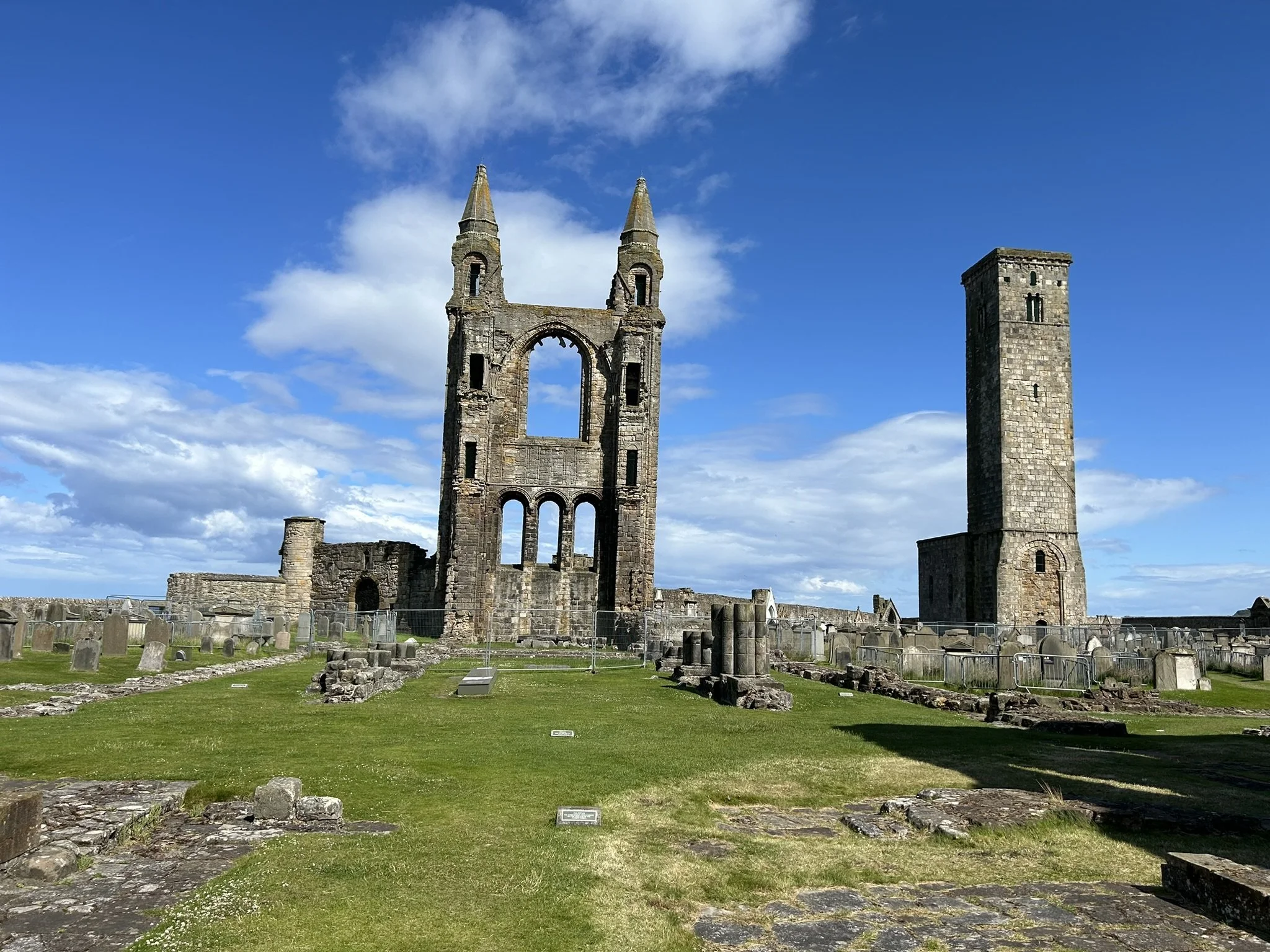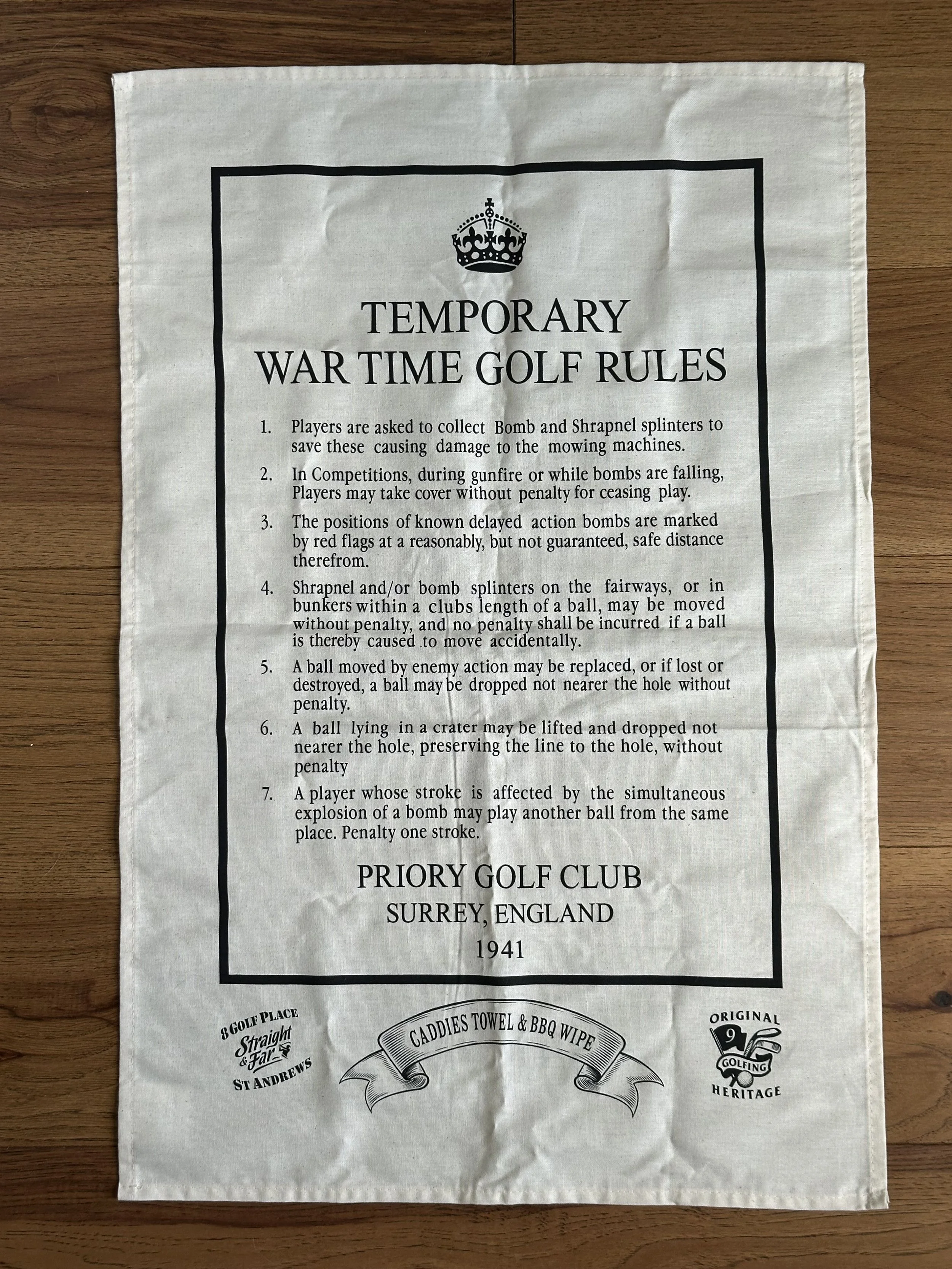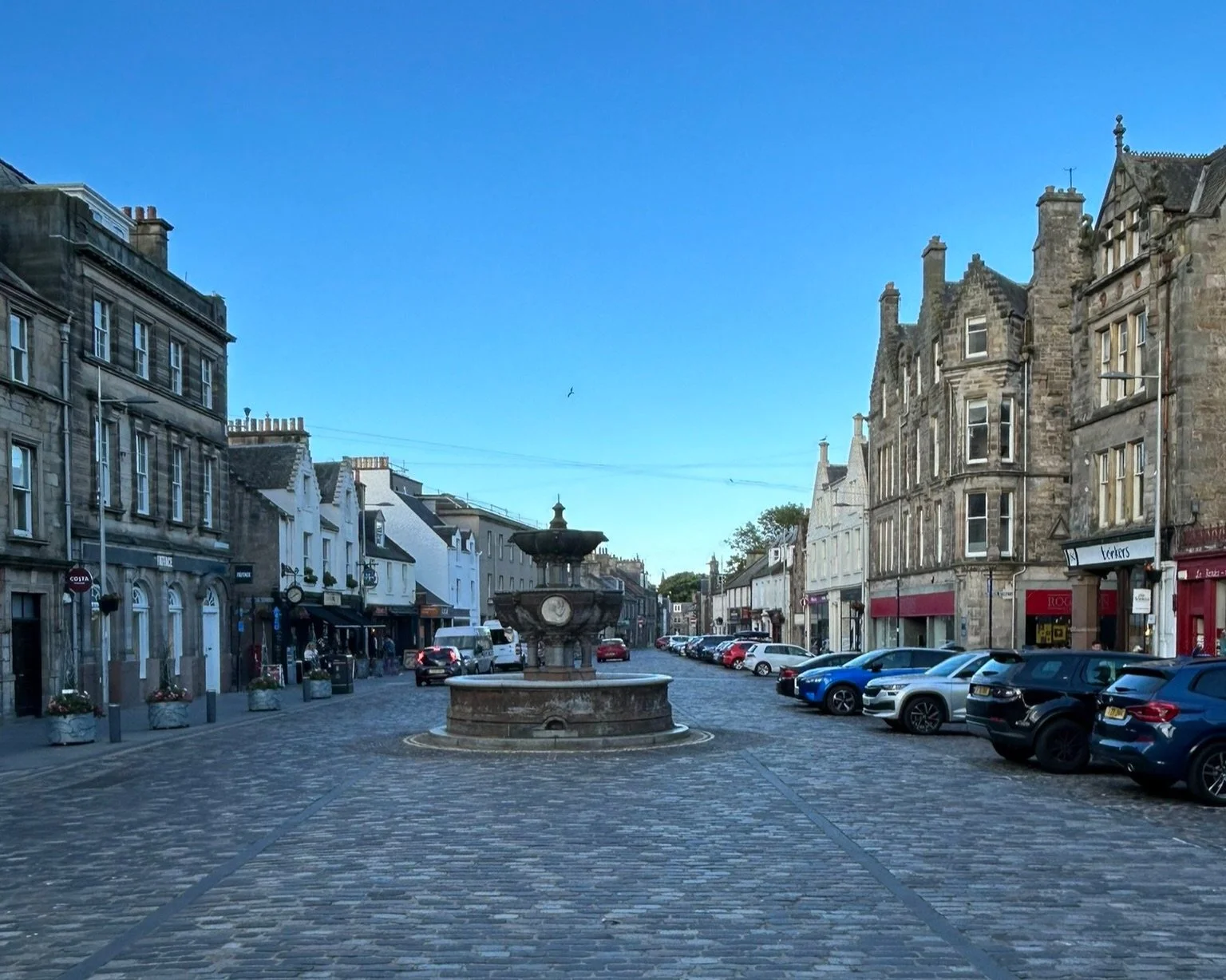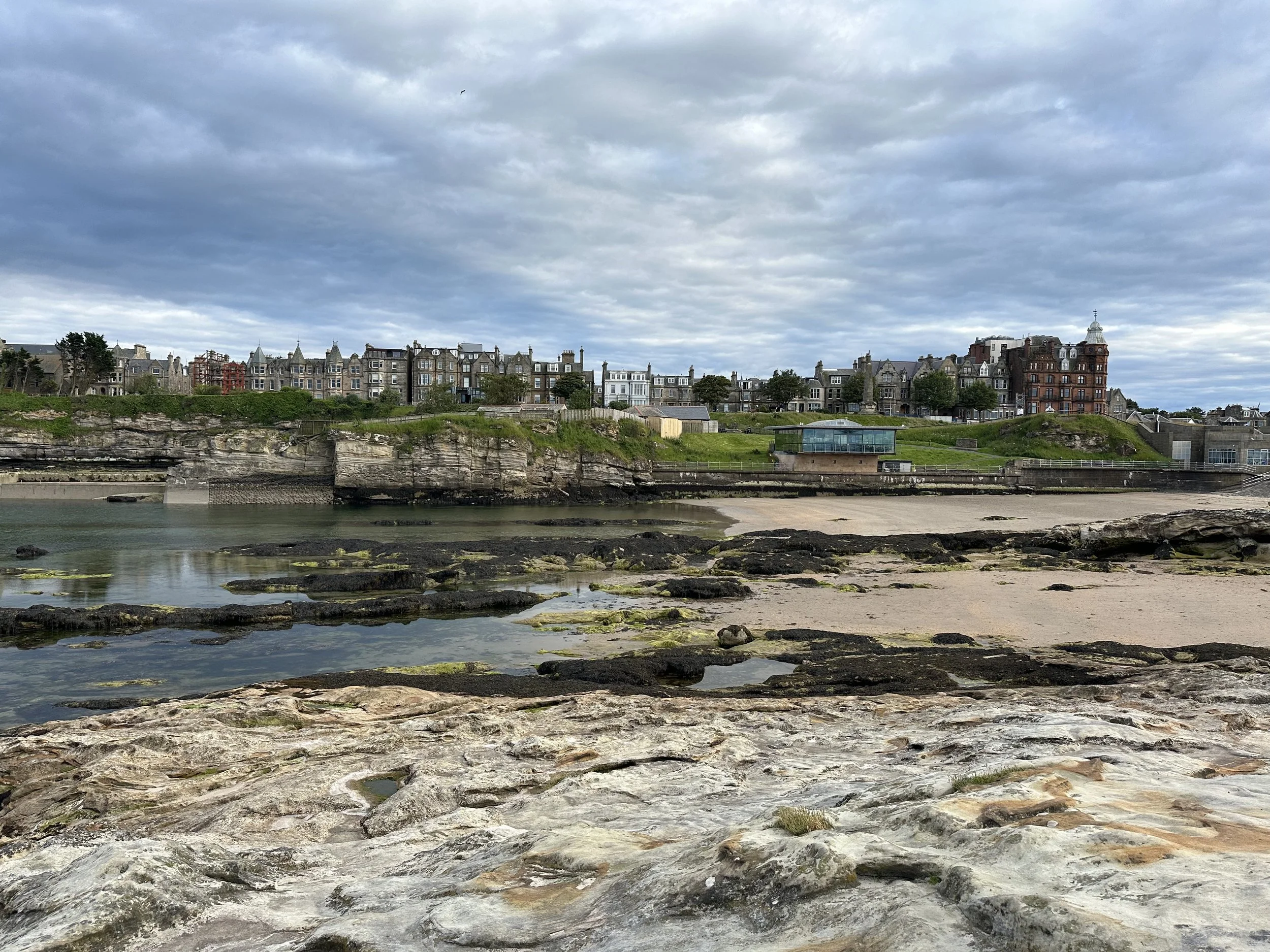There are plenty of things to see and do in St. Andrews, Scotland, even if you aren’t golfing. Yes there are quite a few golf related historical places to see, but there are also some other great places to visit and the town is just a nice place to wander around. While we walked just about the entire town during our visit, here are some of the highlights that are worth a visit.
About the Town of St. Andrews
While St. Andrews is mainly known around the world for it’s famous golf courses, it is also home to a famous University, old churches, the remains of a medieval castle, a cemetery known to have numerous Open Champions buried in, and a host of other historic buildings and sights.
The name St Andrews derives from the town's association with Andrew the Apostle, with the medieval church claiming to possess bones of the saint. According to legends evident from the twelfth century onwards, St Regulus (or Rule) brought the relics to Fife from Patras in Greece. The church at St Andrews claimed as a result to have custody of three fingers from the apostle's right hand, as well as an upper arm bone, knee-cap and a tooth.
St. Andrews University
Located about a ten minute walk east of the R&A Clubhouse, St. Andrews University was founded in the early 15th century, is Scotland’s first university and the third oldest in the English-speaking world. Teaching began in the community of St Andrews in 1410, and the University was formally constituted by the issue of a papal bull in 1413.
Large courtyard in the middle of the University.
There is a PH in the cobblestone in front of the University marking the spot where Patrick Hamilton was burned.
St. Andrews Castle
Just a few minute walk from the University stands what remains of the St Andrews Castle. The castle was constructed in 1189–1202 as an official residence to Bishop Roger. St Andrews Castle suffered significant damage during the Wars of Independence with England (1296–1356) and had to be substantially rebuilt by Bishop Walter Trail (1385–1401). From 1521–39 new gun towers were added to strengthen the castle’s defences and a siege that followed shortly after heavily damaged the castle.
During this siege, a mine and countermine were dug, both of which guests can visit today. St Andrews Castle was left without a resident or a purpose when bishops were abolished in 1592. It fell rapidly into ruin. In 1801, the Great Hall collapsed and most of it plunged into the sea. There were further losses until a sea wall was built in 1886.
We paid about £10 per person and was worth the cost. The entry fee included an audio guide using our own phones and was very informative and did a good job of telling the story of the castle as we moved throughout the property.
Not a ghost - just Andrew.
Entrance to the dungeon.
Courtyard of the Castle.
Courtyard of the Castle.
Countermine dug to repel an invasion.
St. Andrews Cathedral and Graveyard
The land where the ruins of the Cathedral sit is said to have been the site of worship since at least the 700s. Per their website, the Cathedral was begun in 1160–1162 by Bishop Arnold. Work continued over the next 150 years, but was stalled by a storm in 1272, which blew down the west front, and by the first War of Independence against England. When the cathedral was finally dedicated in 1318 – in the presence of Robert the Bruce, by then king – it was by far the largest church in Scotland. So it was fitting that St Rule’s became the headquarters of the Scottish Church.
The cathedral church is now ruined, but large areas survive including the east gable of the presbytery which housed the relics of St Andrew, south wall of the nave, and the west front. The Pends Gate (the main entrance into the cathedral precinct) and much of the precinct wall have also survived.
St. Andrews Cathedral
St. Andrews Cathedral
Several famous St Andreans have been laid to rest here including Allan Robertson - considered to be one of the first professional golfers and the owner of the first golf shop along the Old Course. All told, four separate Open Champions have been laid to rest in this cemetery accounting for 12 titles.
Probably the most famous of those laid to rest here are Old and Young Tom Morris. To get to their memorial site, walk straight towards the St. Rule Tower and when you get to the base, go right until you reach the boundary wall. There you will find the resting place for the Morris family.
During our visit, the Museum was closed and sections of the graveyard were fenced off due to unstable gravestones. We weren’t sure when the museum will reopen but it looked liked the fenced off areas of the graveyard weren’t ever going to reopen. The grass in those areas was really tall as if it had not been taken care of in a long time.
Young Tom Morris Grave
Morris Family Headstone
Historic Golf Sites
Anyone who is interested in golf history will find a few locations around town very fascinating, including a few buildings and locations linked to Old and Young Tom Morris. For a great book about Old Tom Morris, Andrew highly recommends “Tommy’s Honour.” This book was recommended to him by a couple he met while staying at the Lorimer Guest House during our trip and it turned out to be a great read.
The Tom Morris House at 7 The Links.
Home of Young and Old Tom Morris.
While most people aren’t allowed in the R&A Clubhouse sitting behind the 1st tee of the Old Course, there are a few cool things to see on the outside and if you peek in a window the right way, you can see the original Claret Jug, given to the winner of the Open Championship, also known as the “Champion Golfer of the Year.” It can be hard to see with the glare on the window, but we were able to get a picture of it. There’s also a wind meter on the corner of the R&A Clubhouse close to the 1st tee in case you want an accurate number at any given time.
Tom Morris Plaque on the R&A Clubhouse.
Claret Jug in the middle.
Book Store
We came across this bookstore not far from our hotel and Andrew went in at least three times during his trip. It was called Topping & Company and had an incredible selection of books. Andrew picked up an Old version of Cinderella for Julie, and a few World War II Books for himself and his dad as a gift. He also picked up “Tommy’s Honour” mentioned above. This place is what we envision when we think old bookstore. Topping & Company is located on Greyfriars Garden and about a 7 minute walk southeast of the R&A Clubhouse.
Topping & Company Bookstore.
Inside the Topping & Company Bookstore.
Golf Shops
There is one large golf shop around the corner from the Old Course called Auchterlonies Of St Andrews that has a great selection of clubs, balls, and clothing. If you forgot anything golf related for your trip, you can find it here. Outside of that, there are plenty of smaller golf shops that do have some clubs, clothing, etc. but they also have a lot of cool golf memorabilia.
Purchased this at St. Andrews Golf Co.
Fun sign outside The Golf Shop of St. Andrews.
Other Cool Sites
Per the website: the West Port of St Andrews was built in 1587 as a monumental entrance to the city’s South Street. It was less a defensive structure than it was a symbol of civic pride. Its design is based on that of the Netherbow in Edinburgh – which, in turn, was modeled on Paris’s Porte Saint-Honore. The gate was extensively refurbished in 1843 and is located at the junction of South Street and Bridge Street about a 10 minute walk south of the R&A Clubhouse.
West Port of St Andrews
The Whyte-Melville Memorial Fountain is a memorial to the 19th century poet, novelist, and soldier George John Whyte-Melville. After his death in 1880 in a riding accident, his mother, Lady Catherine Melville, commissioned the fountain.
Whyte-Melville Memorial Fountain.
A lot of the things we saw don’t have any history to them but were cool to see so what follows are pictures of some of these sights. They include funny signs, flower planters using golf shoes, a rose garden dedicated to Queen Elizabeth’s II Diamond Jubilee, and even the St. Andrews band practicing (which we were drawn to by the sound of bagpipes).
Rose garden dedicated to Queen Elizabeth II.
Golf shoes used as flower planters.
During our time in St. Andrews, we purposely visited a few of the highlights including the castle, cathedral and cemetery, and some of the Tom Morris sights. However, most afternoons/evenings after our rounds of golf, we would set out in a new direction to explore as much of the town as we could. Not only do we highly recommend visiting the highlights we mentioned above, we would advise everyone, including those on a golf trip, to take time to explore the town. You won’t be disappointed.




